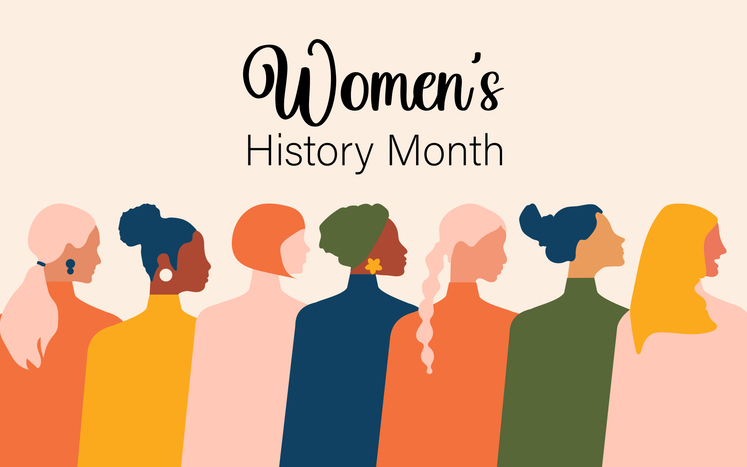March is a month of change and growth. So it’s fitting that this month is Women’s History Month. Women’s history has been one of recent change, growth, and incredible rapid uplift. As we move into the 21st Century and continue pushing for women’s rights and amicable divorce, we should look back at where it all began.
Mary Upton Ferrin—The First Equitable Divorce
In 1845, Mary Upton married Jesse Ferrin. He was, to put it mildly, a terrible husband, an abusive drunkard. Under the laws of Massachusetts, unfortunately, there was nothing Mary could do. Even if the courts let her divorce her husband, he would get all the property, even hers. That was the law.
Mary decided the law was unfair, so she wrote a new one. In 1845, nobody could believe a mere woman could write something so sophisticated, so she had to keep trying. Finally, in 1849, the Massachusetts legislature passed her revolutionary new divorce law. What did she want that was so unheard of?
- Women could keep their own property after divorce
- Married women could draft wills without their husband’s consent
- Widows were entitled to half the husband’s property if he died intestate
Shocking! Mary Upton Ferrin went on to fight for women’s suffrage until her death in 1881. For the first time, women had a say in their own divorce.
From Fault to No-Fault—The National Association of Women Lawyers
Women’s rights moved along in fits and starts. Even during the heyday of women’s suffrage, women were divided on whether women should be allowed to divorce or not. The grand dame of women’s suffrage, Elizabeth Cady Stanton, was anxious to make divorce easier for everyone, but other suffragettes feared it would link their cause too closely with the “free love” movement. Divorce was abandoned for the moment, left for private eyes and pulp novels.
In 1947, the National Association of Women Lawyers decided enough was enough. This organization was founded in 1899 by the first female attorneys in America as the Women Lawyer’s Club. The NAWL formed because the men’s law clubs wouldn’t admit girls into their clubhouses. In the 1940’s, the women reviewed the mish-mash of divorce laws sprinkled across the country and started work on developing something more uniform. Their efforts sparked the first steps towards real divorce reform nationwide.
Ultimately, the NAWL’s efforts were overtaken by work in other states. California’s no-fault divorce law, enacted in 1969, had more to do with the civil rights movement than with NAWL’s early work. Nevertheless, the Women Lawyer’s Club had broken ground for countless female attorneys and legal advocates who would follow.
Rights In No-Fault Divorce
In the old days, when Mary Upton Ferrin married her abusive spouse, women had no legal rights in a divorce. They could only bring a divorce action if they could prove their husband was insane, had abandoned them, or was sleeping with another woman. This led to so-called “migratory divorces” as couples in loveless marriages traveled from court to court looking for sympathetic judges who would accept a tale of adultery and grant a divorce.
No-fault makes both parties equal. Either party can file for dissolution. It isn’t necessary to prove abuse or adultery, although a few states make that a requirement for spousal support. When both parties are equal in a divorce, it creates a possibility for something better than a contested divorce: the amicable divorce.
Amicable Divorce
An amicable divorce is not quite the same as an uncontested divorce or collaborative divorce, although it may partake of both. The amicable divorce process leaves the separation and division of property in the hands of the parties, with guidance from legal professionals only when necessary. The parties cooperate to reach terms they both accept and divide their property as they see fit.
For women, this is the polar opposite of what Mary Upton Ferrin faced when she trudged to the Massachusetts courthouse in 1849. Her only options were staying in a dreadful marriage, or losing everything. An amicable divorce lets both sides meet in a neutral setting and discuss their situation rationally. Nobody needs to lose everything and they can part as equals.
Unlike times past, where women had to wait for the men to decide their fate, even in a divorce, amicable divorce puts women in control of their situation. When you decide this marriage isn’t for you, you no longer have to fear that you’ll lose your home, your possessions, or even your children. Mediators, attorneys, and facilitators can help you and your partner come to a resolution that works for both of you.
Amicable divorce is not for everyone. Even today, someone in an abusive or dangerous relationship might not be able to take advantage of the mediation and give and take of this style of divorce. If you’re not sure, you can discuss your situation with a mediator or attorney who specializes in amicable divorce and learn if you may benefit from this process.
Final Thoughts
At Divorce With Dignity, our Providers are therapists, attorneys, mediators, and counselors who know how far you’ve come and how far you still have to go. We want you and your partner to make a clean break and separate peaceably and amicably. Whether it’s just you two or there are children involved, we want to keep things moving forward. The DWD Providers work with everyone to ensure a fair and peaceful resolution to what is so often an unpleasant separation.
More than that, you can always depend on us if there are any wrinkles afterward. We don’t sign the paperwork and turn you loose. At DWD, our Providers want to see you carry on in the proud tradition of Mary Upton and the Female Lawyers Club. Once you’re out in the world, if you need help in the future, you can turn to us for a referral or assistance. When you need help, you can call on us.


